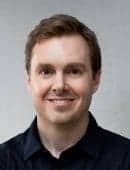
Titled, Inside the EPA’s Proposed Change to the Noise Reduction Rating, the brochure is designed as a handy information resource for safety managers, providing background on the impending new rating system and the ANSI testing protocols on which it is expected to be based.
A chart provides a comparison of key elements of the current and proposed NRR regulations, and a sample product label shows how the new NRR scheme will be applied. An extensive Q-and-A provides additional background on the details of the anticipated regulation and its impact on occupational hearing conservation programs.
"As we all know, the current NRR lacks real-world perspective that comes with the individual use of earplugs and earmuffs," says Renee S. Bessette, a company spokeswoman. "This anticipated change to the NRR is expected to help to personalize hearing conservation programs for workers and improve its overall efficacy."
Since 1974, the EPA has used the NRR to measure hearing protector effectiveness. However, it has been criticized for being too generous in predicting the noise reduction (attenuation) of hearing protectors, since it is based upon idealized laboratory testing. Under the expected regulation, a new rating system will be used.
While it will still be known as the NRR, and still be based on laboratory tests, it will now reflect a range of expected protection, instead of a single-number estimate. The lower number of the range will indicate how much attenuation minimally trained users can expect, while the higher number will indicate how much attenuation highly motivated, trained users can expect to achieve.
The brochure provides perspective for hearing conservation program managers and other safety professionals on steps they can take now, including the use of HPD evaluation tools, such as Howard Leight’s VeriPRO fit testing system. Through simple listening tests, the system can determine the personal attenuation rating (PAR) of an earplug’s fit, and identify if employees are receiving optimal protection, require additional training on how to fit their earplug, or need to try a different model.
Copies of the brochure are available through the company Web site.




